I’m a casual kayaker — not whitewater — and honestly, you don’t need a lot of gear to go out on a normal, relaxed kayak trip on calm water. But lately I’ve answered this question on a few online forums: What does a newbie need to bring kayaking? Here are my suggestions …
Life vest = PFD (Personal Floatation Device)
Other than a kayak and a paddle, the thing you need more than anything else is a life jacket. Or in kayaking speak, a PFD (Personal Floatation Device). Life vests that are designed specifically for kayakers allow more range of motion. I wear an ONYX paddle life vest.
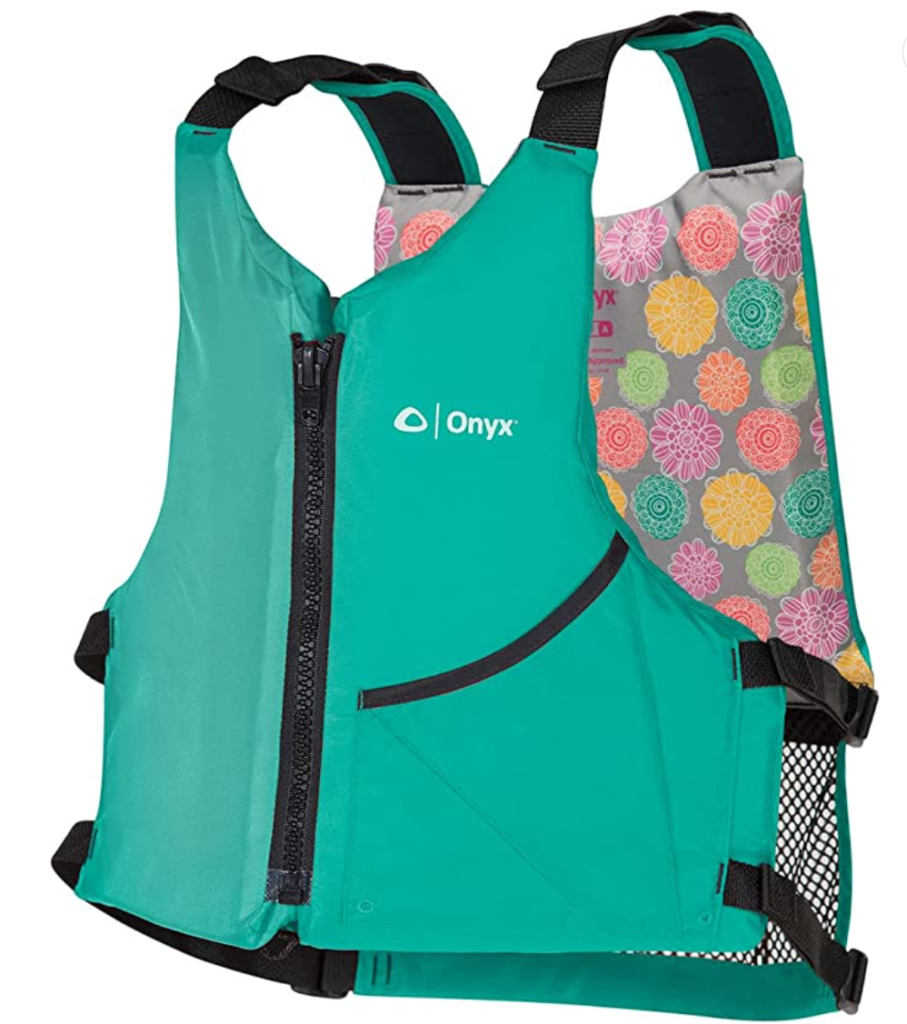
Some people avoid life vests because they don’t like to wear anything extra. On a kayak, I don’t really think they’re optional. A kayak is a very small boat, and you’re basically in the water already when you sit in one. Your little boat could overturn at any moment, and you could easily be knocked out or become disoriented when it happens. Even if you’re a good swimmer wearing a life vest is a must.
Some people ask about wearing an inflatable life vest. A life vest that inflates when you hit the water saves on bulk, but remember it may fail. Also, an inflatable can easily pop on a sharp stick, leaving you with less (or no) floatation. But if the only life vest you’re willing to wear is a deflated one, go for it — you’re much better off with the inflatable than no floatation device.
Sun Protection
After a life vest, the next most important thing you need to stay safe is sun protection. I like to use sunscreen face stick on my face (the waxy stick runs in your eyes less), waterproof sunscreen spray on my body (I spray then rub it in so it’s even, but it’s less greasy than lotion), and a hat. I wear a bucket hat with a chin strap so I have 360 degree protection around my face, neck, and ears, and the strap helps prevent me losing my hat in the wind.
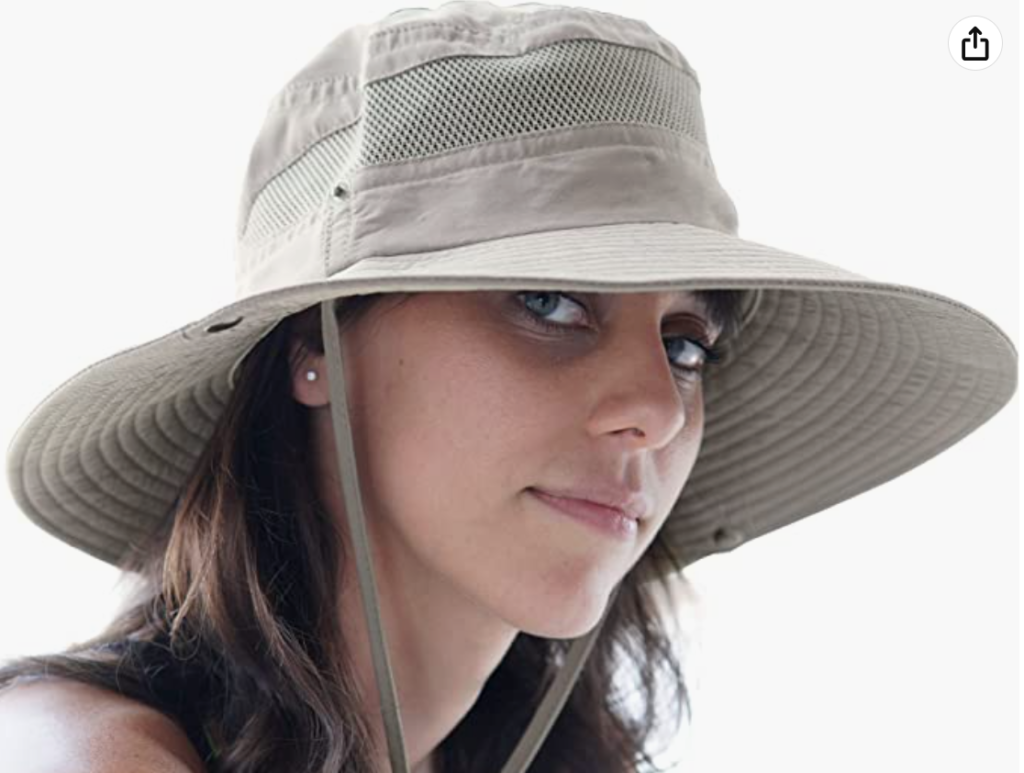
Usually I wear a lightweight UV protection jacket so I don’t have to cover my entire body with sunscreen. (Here’s a UV protection jacket suggestion for men too.)
Water shoes
People often ask about water shoes. They aren’t required — you can wear any shoes you can get wet. I usually wear “water socks“, and my partner prefers to wear flip flops. You are more likely to lose one of your flip flops than a water shoe, and I like having toe protection. I sometimes wear rubber garden shoes and have friends who wear strappy sandals like Tevas for kayaking.

Remember you’ll regularly get your feet wet when you launch and land your kayak. And don’t expect to stay dry. I never do.
Dry bags
When it comes to dry bags, I use a waterproof dry bag backpack. Mine is cheap and versatile, not the highest quality, but it keeps everything dry so far and is capable of floating. It folds up and fits into another back for easy packing on trips, and is big enough to carry a change of clothes, towel, and lunch. Mine is also practical for bicycling or even hiking in the rain, so it’s nice to take on a trip that might involve any combination of potentially wet activities including bicycling, hiking, boat rides, and sightseeing.
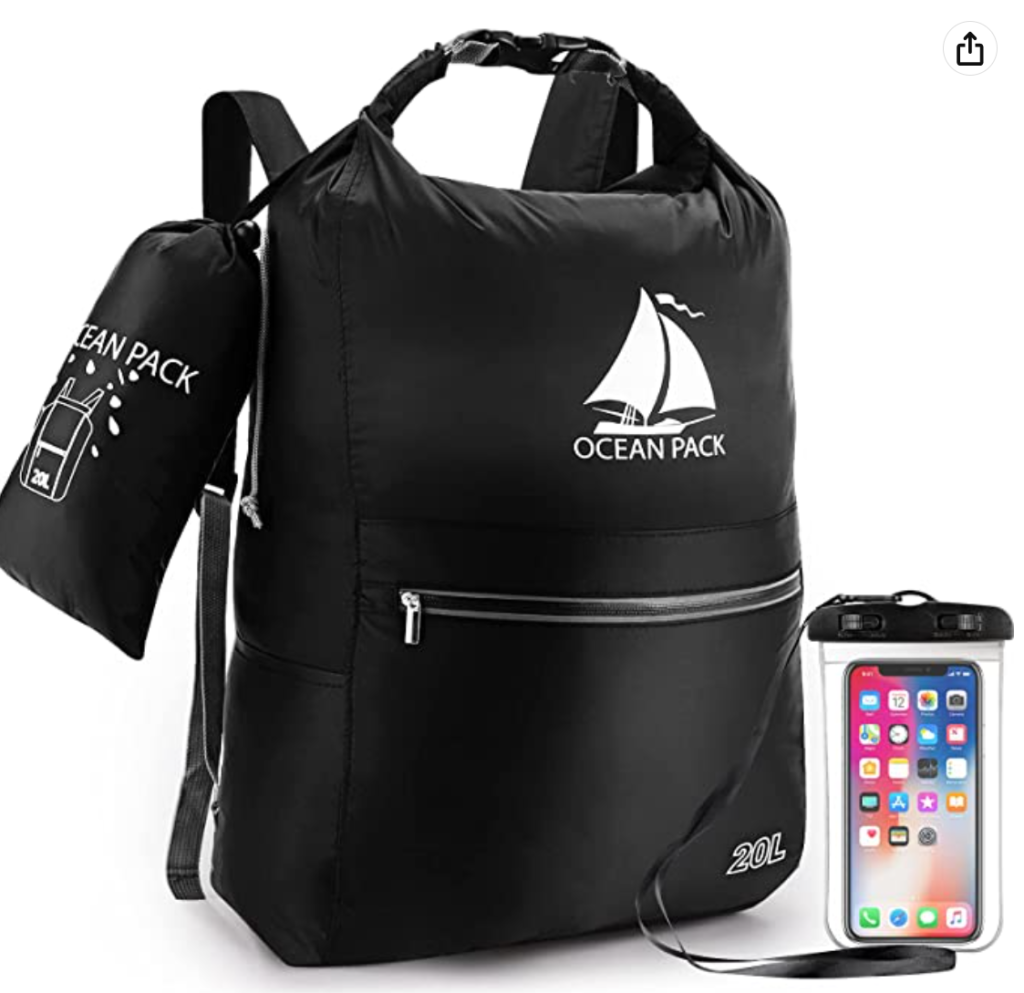
When you’re bringing your waterproof bag on a kayak or other small boat, you want to help it float, so when you seal the bag you need to trap as much air as possible in the bag. Ideally, the bag will be blown up a bit like a balloon. When you drop it in water, it should float, but don’t count on it floating for too long, especially if you’re buying an inexpensive product like the one I have.
It’s also a good idea to attach your bag to your kayak. Even if your bag floats when it falls into the water, it can easily get away from you. Most kayaks have a tie-down for you to attach your cargo to, but if not you can just use a little parachute rope or bungees and maybe a carabiner to make it easy to unhook.
Waterproof Neck Pouches for your phone, keys, wallet
To protect your phone, car keys (remember your car key probably has a microprocessor in it, and it isn’t necessarily waterproof), and wallet, you can buy a number of products, or you can just use a time-honored ziplock baggie. It’s best to bring as few of these items as possible just in case you lose them in the water. I usually just bring a little cash and a single key. I’m 50/50 on bringing my phone — especially if someone else is taking photos, it’s nice to leave the phone on the shore too, so I can really relax and enjoy the water.
If you don’t have anywhere secure to put your small items, like a pocket that zips, a bum bag (fanny pack) or neck pouch can work well. I’m in love with Dakine fanny packs and own several of them. They aren’t waterproof — you still want to use a baggie with these.

Rather than a simple ziplock baggie, I often use a waterproof neck pouch for my phone. I’ve noticed these are regularly included as freebies with other items, but I have bought a few as well. I keep them in my kayak bag to lend to friends along with life vests when they’re joining me on a trip. The downside to a waterproof pouch or baggie is that, while you can use your phone and take decent photos while the phone is in the bag, it can be clunky and your photos won’t come through perfectly, so you might end up needing to remove the phone now and then to get your best photos.
Some people get a special waterproof housing for their phone, which will allow you to take the best photos possible without removing the phone from the case. If there’s one available for your phone it’s a nice option. They’re more pricey, but also more rugged, and you can protect your phone and take your best photos at the same time.
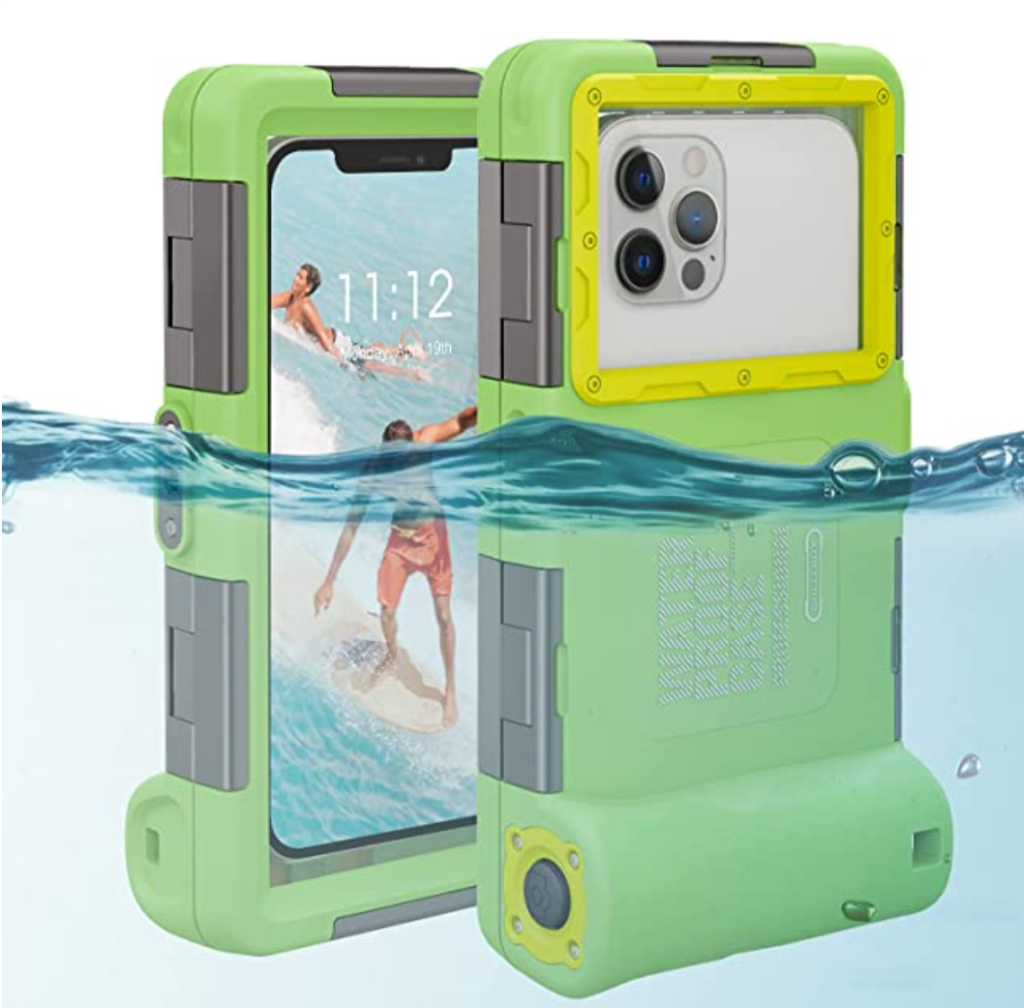
Separately, I have a couple hard plastic cases, which fit credit cards and keys very well, but are too small for a phone. These can be worn alongside the phone neck pouch if needed.
Whistle while you paddle
In many places, you are legally required to carry a whistle. It’s always a solid idea to carry a whistle when you’re doing outdoor activities just in case you have an emergency. If you’re badly hurt, or working hard to swim, shouting to get people’s attention might not be possible or enough to be rescued. Sometimes a whistle is integrated into a life vest, but if not most life vests have somewhere to attach one.
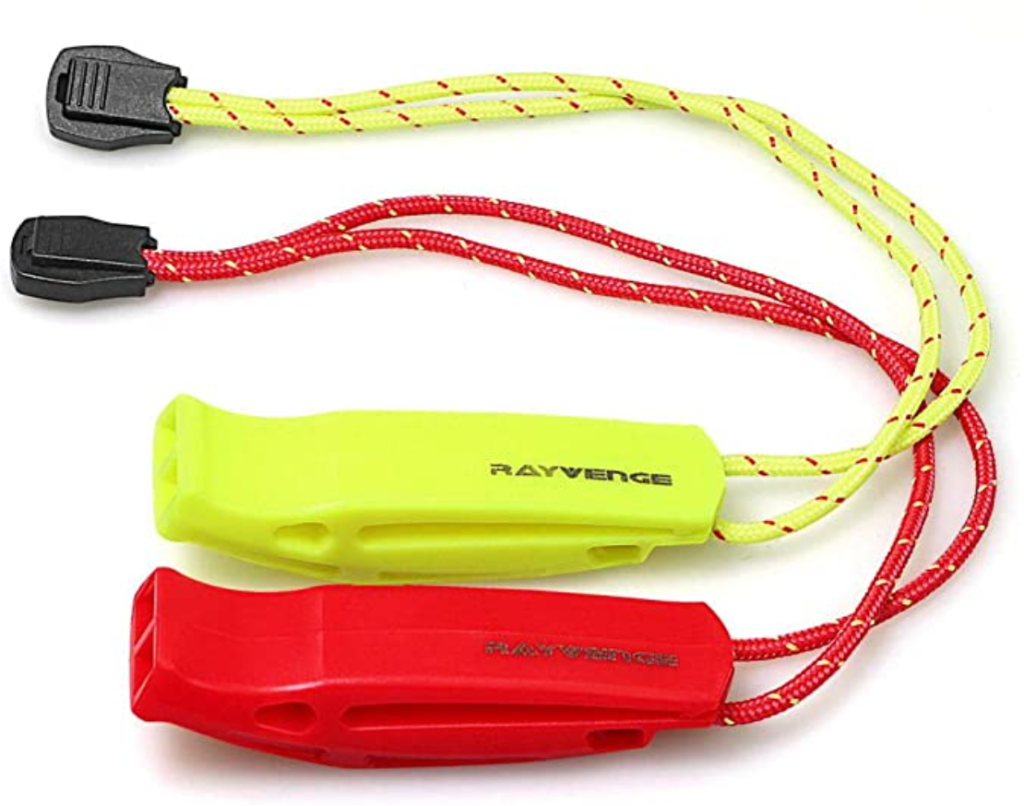
You may already have a whistle around the house somewhere, but if you’re buying one, you may as well buy a few whistles, because everyone on the boat should have their own whistle on their person.
Going lightweight
I like to stick with the minimum, and prefer to keep everything lightweight and fast drying. (Remember that when things get wet, they weight more, so the less water your gear absorbs, the less it weighs.) So I make sure the things I bring are mostly quick-dry.
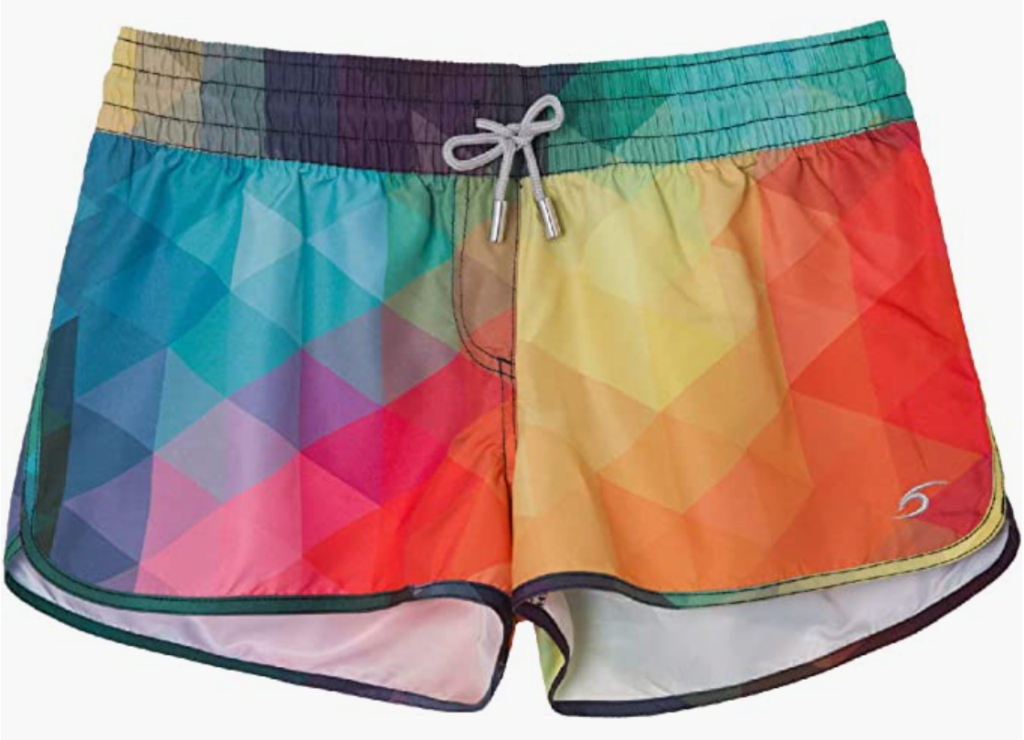
I usually wear board shorts when I kayak. I don’t always bring a change of clothes, but if I do I try to make sure it’s as lightweight as the one I’m wearing.

I always bring one or more of my backpacking towels (mine are Sea to Summit pocket towels, large size), which fold up very small don’t take up much space. I use these as towels, but they’re light and thin, so I can also tie one on my shoulders as sun protection or use them as a picnic blanket. I have bright colors and imagine that possibly the orange one might be helpful if I need a little flag to attract a rescuer (wow I hope that never happens!).
Tying things up, with rope
You don’t necessarily need extra rope on a kayak, but it’s helpful to have some handy. You might use it to tie your boat up somewhere (moor), to tow (or be towed), to form an armada with friends, or to secure your gear to the boat. I use multipurpose parachute cord because it’s good for many things, but on the water lots of people suggest 5mm reflective paracord. Just cutting a few pieces that vary between 6-12 feet long and keeping them in your dry bag may be helpful, as well as putting a 15ish foot mooring line on your kayak if it doesn’t have one already.
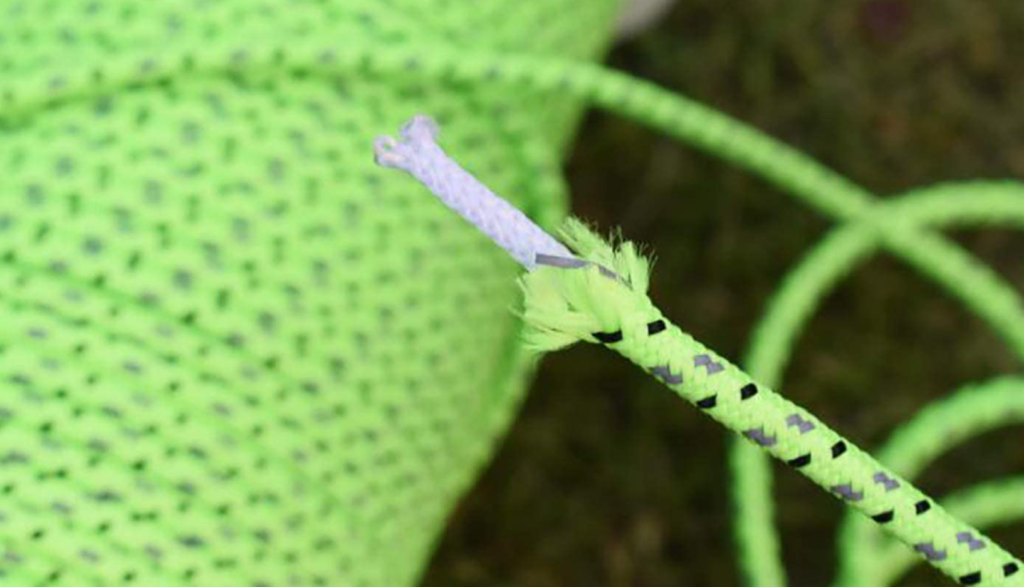
Keep in mind that rope needs to be tucked safely away so that it won’t get tangled up with anyone on the boat, because tangles can cause tipping or, worse, prevent you from swimming after your boat tips. (This includes the towing/mooring line that may be attached to your boat.) My extra rope is kept wound up in my dry bag.
Eating & trash
Personally, I never seem to eat or drink as much as I thought I might, so I try to bring minimal food and drinks. A bottle of water and some fruit, or maybe a bar, a sandwich, some cheese & crackers — really anything that’s easy to bring in a backpack and eat without a table works for me. I don’t bring any glass. When we bring beer or fizzy drinks, we bring cans. They’re lightweight and easy to crush and put in a trash bag. I have a compact plastic flask for wine or liquor.
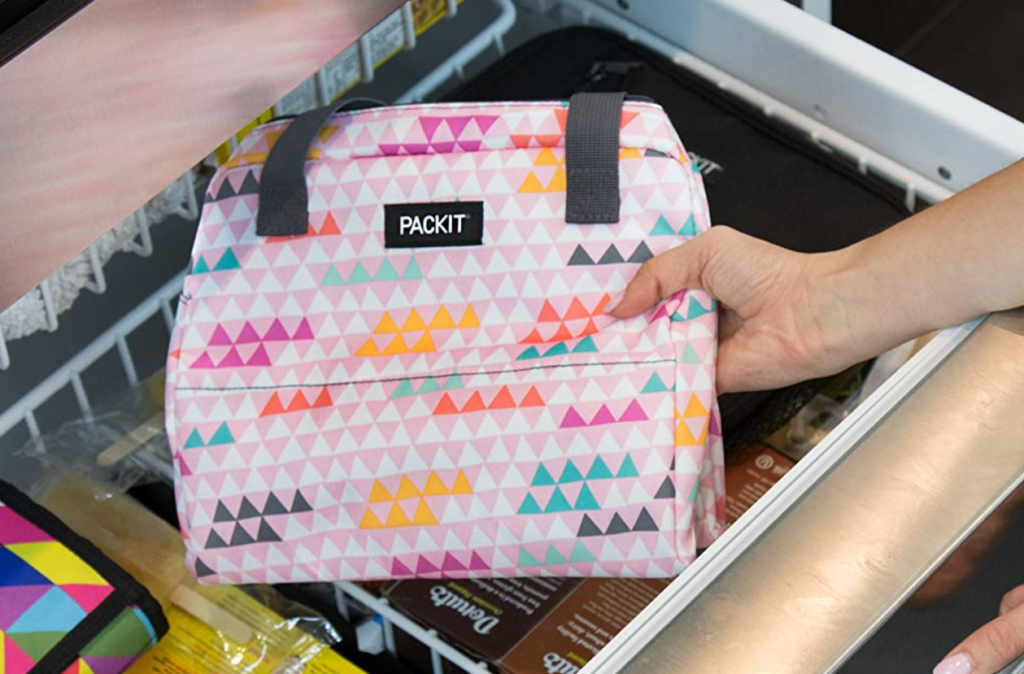
If the weather is warm I use a cooler bag. Normally it will fit in my dry bag, but if it doesn’t I just bring it along (tethered to the dry bag with a carabiner). My cooler bag is the kind that you keep in the freezer and has built in ice packs, so it’s grab-and-go and I don’t worry about melty ice or ice packs. But I don’t think you need a special cooler just for kayaking, just use what you have!
And of course, never forget to bring a trash bag and make sure to keep it in your dry bag or tie it down. A bunch of trash really ruins the view for everyone else. I use a large, gallon-size ziplock baggie for trash when I’m worried about contaminating my things (like if I’m going to put the trash back in my backpack for the day).
Bathroom breaks & bathroom waste

Remember if you drink too much you’ll have to pee more. If away from civilization, I stop on the shoreline for a “nature pee” and I bring a small bunch of tissues or toilet paper. (And of course if you’re swimming, a “swim pee” is probably the way to go!)
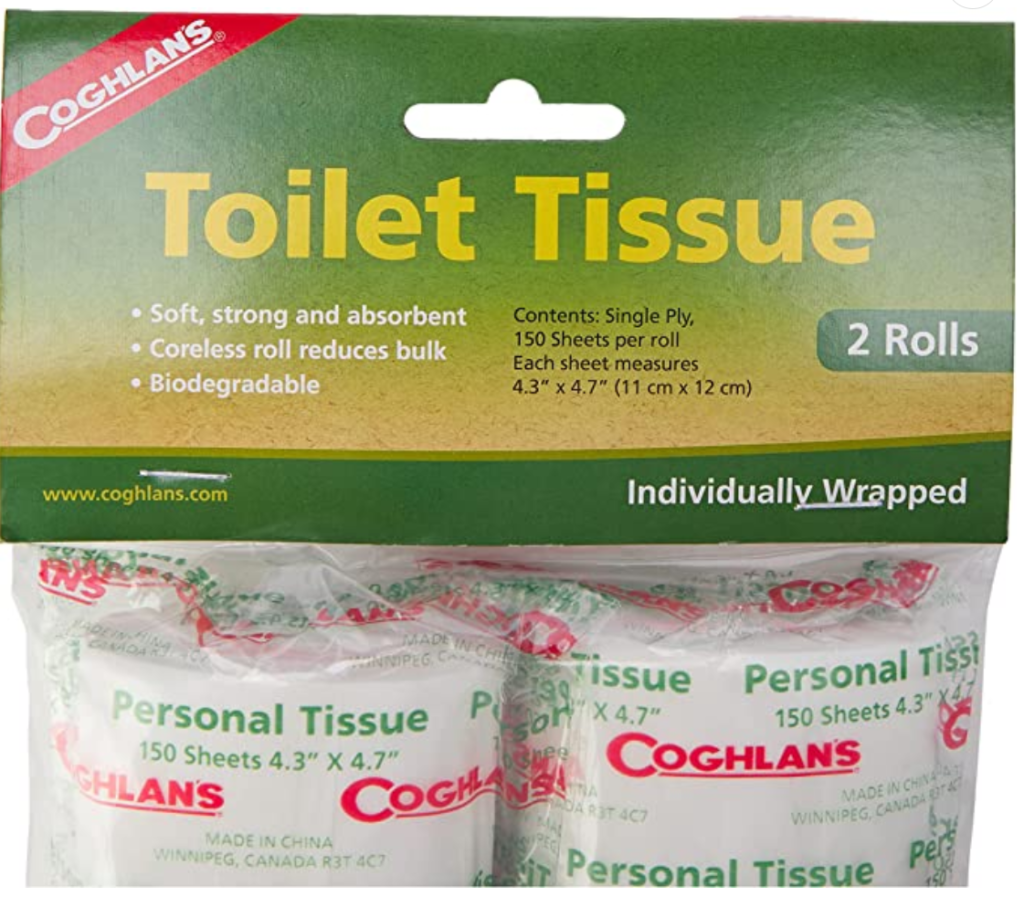
If I have tissue trash, I either bury it (burying is fine if you’re in silty dirt among wild plants, etc, but not in the sand or somewhere it won’t biodegrade naturally) with a stick (you can bring a travel shovel but I just improvise) or put in an a baggie that goes into its own pocket in my dry bag to be thrown away when I get to a trash can. Fortunately I haven’t needed to “nature poop” on a kayak trip yet, but I think the same waste disposal rules apply: Bury it somewhere it will biodegrade, or dispose of it when you get back to civilization.
Light up the night
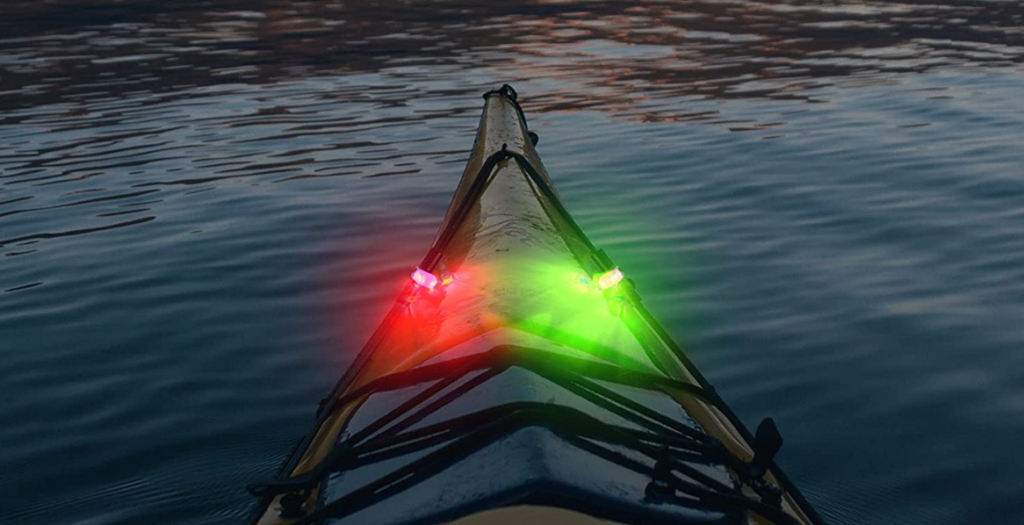
What if you want to kayak at sunset, pre-dawn, or nighttime? In many places, you’re legally required to light up your boat. And even if it’s not required, you’re much safer from a motorboat mowing you over if they can see you — plus if you’re lost, you’ll be more easily found. You can attach lights to your life vest and the tie-downs on your boat. All-purpose safety lights work well, and you can use the same safety lights you bring kayaking when you’re bicycling, jogging, and walking at night. I find myself buying these regularly and don’t suggest buying anything too expensive, since mine have a tendency to disappear.
Dropping anchor
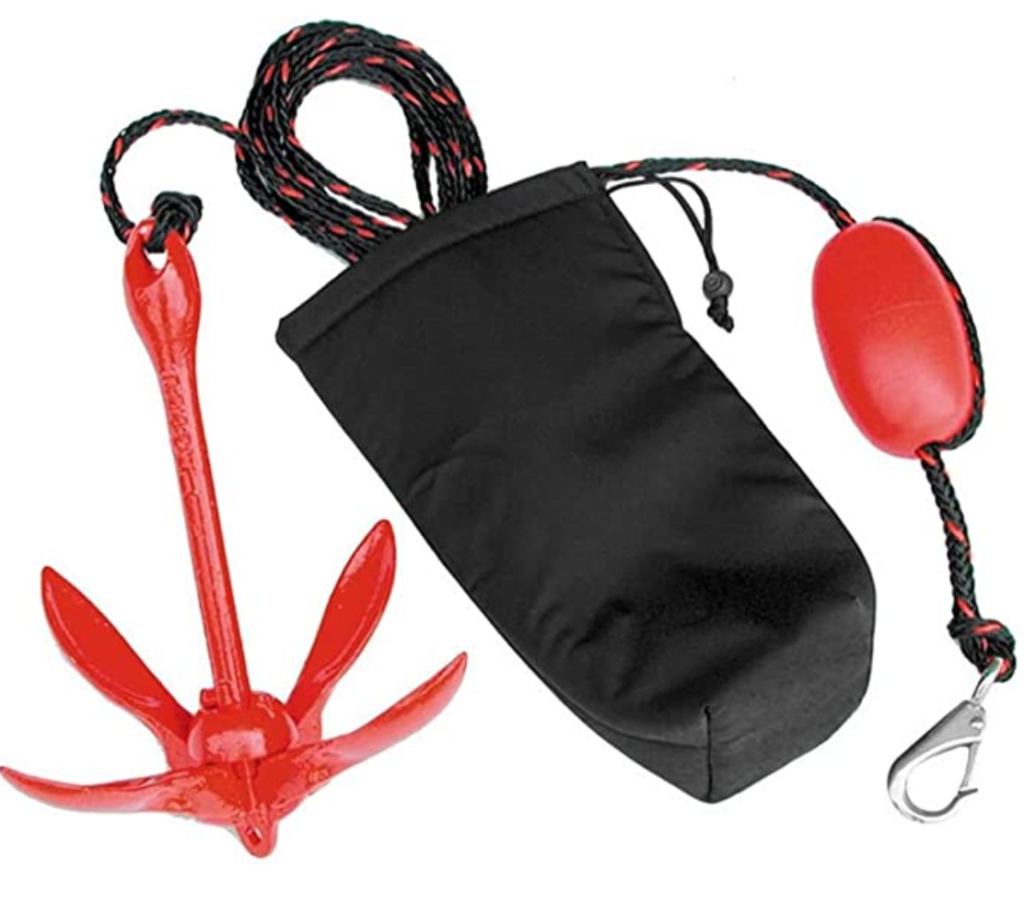
If you want to fish, birdwatch, or stay in one place in a current, an anchor is a nice (but not strictly necessary) addition to your kayak gear. A small anchor will work well. I suggest a lightweight anchor with a float so it’s easy to remember which way to pull up. (Remember that if you’re in an inflatable kayak, you’ll want to be careful because anchors are pointy! But you can absolutely use one in your inflatable kayak, just take care and keep it the pointy bits folded and tucked away when you’re not using it.)
Have fun, stay safe, don’t overthink it!
These are the gear I think you should consider, but every time you paddle, you’ll get experience and figure out what you really need next time. I think the most important things for a beginner to remember are:

- Try easy spots first — lakes and reservoirs are my favorites for relaxing and low-stress trips on the water.
- Have a buddy or make sure there are other people around who will see you need help if something goes wrong.
- Start with warm water first if you can — the risk is lower if you fall in.
Have fun, don’t overthink it, and make sure to stay safe so you can enjoy your next adventure!